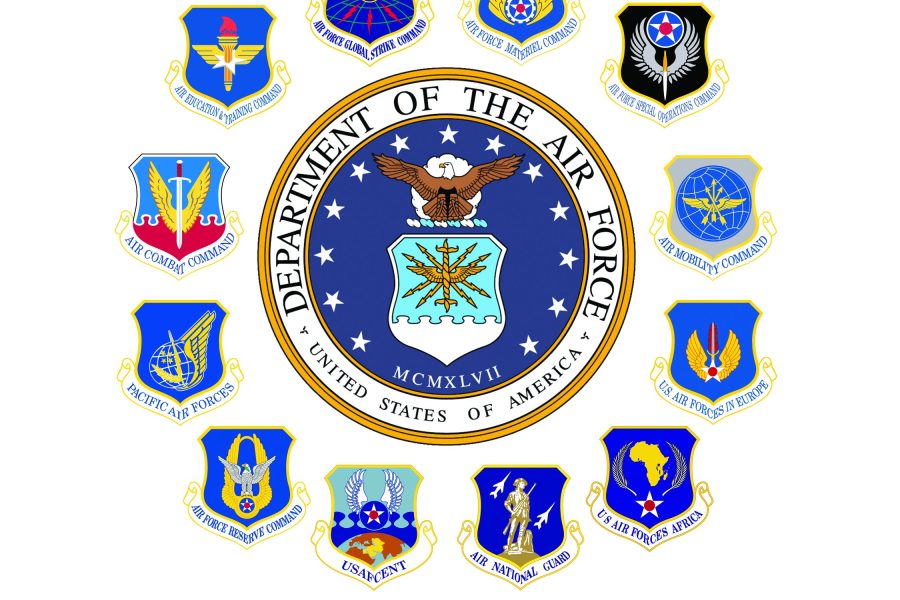ORLANDO, Fla.—As the Department of the Air Force’s sweeping re-optimization review nears its January deadline, service leaders are contemplating fundamental changes to USAF’s nine major commands.
“We’re going to transform the entire Department of the Air Force organizationally to prepare for great power competition within the next quarter,” Space Force Lt. Gen. Michael A. Guetlein said at the Space Force Association’s Spacepower Conference Dec. 13.
Guetlein, whose nomination to become Vice Chief of Space Operations is among several Air Force four-start appointments currently on hold, said in his keynote address that “the Air Force is going to get rid of the major commands structure.” But appearing again soon after, Guetlein suggested he had overstated the changes.
“I made it sound like decisions have been made,” he told reporters. “There have been no decisions made in this realm. [Air Force Secretary Frank Kendall] has not even been briefed on this yet. It’ll be several months until that happens, and when he’s ready, he’ll roll out those changes.”
The Air Force has tweaked its MAJCOM structure in the past, most recently with the elimination of the former Air Force Space Command after the Space Force was established. Before that, the establishment of Air Force Global Strike Command was the most recent change. But as recently as 2020 the service’s top leadership has considered concepts for radically overhauling the entire structure, according to former Air Force officers familiar with those plans.
Guetlein told Air & Space Forces Magazine in a brief interview that “there are no sacred cows” when it comes to changes that could result from the re-optimization review, which Kendall first announced in September at AFA’s Air, Space & Cyber Conference.
“We’re looking at the entire structure of the Department of the Air Force in [terms of] how do we better posture us for great power competition,” Guetlein said. “And the way we’ve always done business in the past is not the way we’re going to do business in the future.”
An Air Force spokesperson later added that the teams conducting the re-optimization review “continue to generate and carefully refine a list of notional solutions.” It’s unclear if Guetlein’s comments reflect one or more of those options.
Kendall has the department on a sprint, with the stated goal of completing the re-optimization review and initial implementation plans by January 2024. “The Air Force and Space Force are incredibly capable, but we need to reoptimize the department for greater power projection and for great power competition,” Kendall said in September.
The reason for the rush may be to get ahead of any changes that might need congressional approval in the next legislative cycle, or it could simply be something else. At 74, Kendall is widely anticipated to be committed to his role through the current administration, but may not extend past the next presidential inauguration.
Managing the Force
Optimizing the structure of the major commands ties directly to another initiative still in the work: implementing USAF’s new Force Generation Model. Known as AFFORGEN, it is designed to help the service better understand and communicate near- and long-term risks when responding to requests to deploy forces to the nation’s warfighting combatant commands. AFFORGEN establishes a four-phase, two-year cycle for deployable units. The four six-month phases take the units from “reset,” to train, maintain readiness, and deploy, before returning to reset.
In September, the Air Force introduced the concept of Air Task Forces to better identify the kinds of units that are needed to deploy because the service no longer deploys squadrons and wings as they once did. Lt. Gen. James C. “Jim” Slife, deputy chief of staff for operations and nominated to become the Air Force’s Vice Chief of Staff, said the disconnect between the way the service deploys forces and the way they are organized at home has grown over the past three decades.
“We organized our Air Force to be as flexible as possible, break it up into as many small little things as we can, and deploy,” he told Air & Space Forces Magazine in a recent interview. “We’re in a different strategic environment now.”
The Air Task Forces, which will begin reset cycles next year, provide units with which the service can experiment as leaders try to develop units that can train, deploy, and fight together, rather than assembling teams on the fly once they arrive at overseas locations.
“We’re looking at a set of attributes that include things like prizing mission over function,” Slife said. “It gives us a better ability to articulate capacity, risk, and readiness to the joint force.”
AFFORGEN and the Air Task Forces contribute to the larger re-optimization effort, and Slife said he does not anticipate a one-size-fits-all endeavor. AFFORGEN will not necessarily apply to units at regional commands, such as those in U.S. Air Forces in Europe-Air Forces Africa (USAFE-AFA) or Pacific Air Forces (PACAF), in the same way as they might for units in Air Combat Command or Air Mobility Command.
“The Secretary uses the term reoptimize,” said Slife. “A portion of that may be organization. But that’s not the main point. The point is that every change in the strategic environment privileges different attributes, and we [must] adapt our Air Force to optimize for whatever the attributes are that are relevant, that are privileged, for that environment.”




